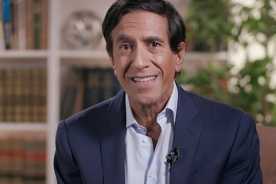Challenges


Stressed on the job? You’re hardly alone. Job-related stress affects more than half of working Americans, according to a 2025 survey from the American Psychological Association. The survey found top stressors include job insecurity, lack of managerial support, ageism and the isolation and blurred boundaries that come with working remotely. These can all do a number on us.
The good news: There’s a way to dial down stress levels and guard against the health problems that arise from job stress, researchers say. The solution: exercise.
Stressed-out workers protected by physical activity
A review of research published in 2025 in Work: A Journal of Prevention, Assessment & Rehabilitation suggests that regular exercise not only helps alleviate occupational stress and anxiety, but it can also have a ripple effect that leads to an overall improvement in health habits both on the clock and off.
In reviewing the data, which included 12 studies published between 2019 and 2024, the researchers found that aerobic activity — whether it’s dance class, jogging, swimming or cycling — had the biggest impact. But mindfulness-based activities such as tai chi and yoga also played a role in reducing stress and improving well-being. Regular strength training — weightlifting and resistance band exercises three times a week — helped reduce work-related fatigue.
“Some people are more vulnerable to anxiety and stress than others,” says Tamar Mendelson, a professor at the Johns Hopkins Bloomberg School of Public Health, who was not involved in the study. “Exercise can have a positive effect on how we respond to stress and may be a great tool for people who struggle with stress management.”
In one study, published in 2023 in Circulation: Cardiovascular Quality and Outcomes, scientists looked at the combined effect of working stressful jobs that required high effort but provided low reward, as perceived by nearly 6,500 office workers. The participants, men and women with an average age of 45, worked in senior management, professional, technical and office worker roles; some had no high school diploma, while others had a university degree.













More From Staying Sharp
Feeling Tense? Try Box Breathing
This simple technique may help you chill out
Tame Your Inner Tyrant
A positive outlook starts within
Practice Self-Compassion
For greater well-being, be kind to an important person: you